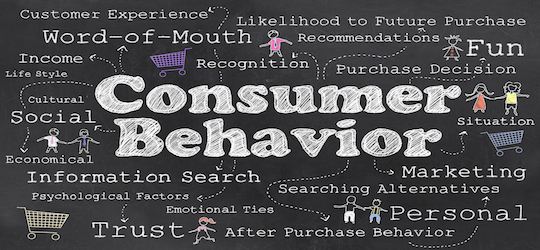If you are a business owner, the one thing you can never be sure of is customer behavior. It can seem less complicated to make your yearly budget, audit your inventory or file your self-employed business taxes than to understand customer behavior. Customers are temperamental, illusive creatures. The reasons they buy are complex, composed of many influential factors. They are effected by impulse, education, price, convenience, image, peers, reviews and many more factors. It can feel almost impossible to be sure of any concrete reason a customer is buying, let alone to appeal to their decision making process. Recent studies have shown that buyers may be leaving clues to their thought process along the way, and their buying decisions may be less of a mystery than previously thought.
Device choice matters
The device on which a person is shopping often indicates the urgency of buyer intentions. Andy Ching, director of mobile for Bing, stated that “70% of mobile searches are followed up by a consumer action within an hour.” So, a person shopping on a mobile device for car parts, for instance, will probably end up buying them by the end of the day. Where as a person searching on a desktop computer or laptop will most likely be searching with leisure intentions, comparison shopping, or simply researching.
Unless you are simply passing time, if you are searching for a product on a mobile phone, your intentions are most likely to take action immediately. Searching for products on mobile is often cumbersome and not very enjoyable, so the very act of the search itself on a mobile device often indicates an intention to buy.
Also, mobile visitors do not prefer to keep scrolling, due to lack of online real estate. The top 100 products displayed on any page influence the CTR (Click-Through-Rate) and conversion rate. Hence dynamically displaying the products (old or new) that are more likely to sell has the maximum impact on conversion. You can use Site Search tools like Tagalys that optimizes your online store for the highest conversion and gives visual control of products displayed.
Buying cycles are longer
With all the available information out there, potential customers are researching and comparison shopping much longer than in the past leading to longer buying cycles. A recent study by Forrester Research analyzed the online buying behavior of over 600,000 consumers across numerous e-commerce sites, and showed that surprisingly “75 percent of shopping cart abandoners would actually return to the site they abandoned within a 28-day period. This defies conventional wisdom. After polling a group on online marketing specialists, 81 percent believed that the majority of abandoners never return.”
Charles Nicholls, of the website conversion company SeeWhy, says that “not only are these abandoners more likely to finish their purchase, they are also more likely to make future purchases. In fact, they are 2.3 times more likely to do so than new visitors making first-time purchases. The stages of the buying cycle tend to go in this order: browse- abandon-consider-research-consult friends or reviews-browse-purchase.”
Buyers are seeking advice to fit their needs, not ready-made solutions
Emma Vas, the Director of Marketing for Invenio Solutions, says “most buyers are already deep into the buying cycle before they reach out to a representative or sales person.” They want to know how your product can meet their needs or offer a custom solution, not a generic benefit list that has little to do with their personal situation. Reaching out to a sales rep often means your visitor is in a mature state of the buying process. Having a personal chat conversation with a representative who can listen and understand a customer’s needs drives sales much further than a generic list of benefits on a product page on your website. Integrating CPQ integrations into your sales process can significantly streamline the customization of products to fit unique customer needs, enhancing the buying experience and potentially increasing conversion rates.
How Can Your Online Business Respond?
1. Understand why website visitors don’t buy: It’s important to collect data unique to your customers. Use exit survey tools, and triggers to get useful feedback on not only what stage of the buying process a visitor is in, but what is prohibiting a sale or influencing their choices.
2. Track Visitors to follow their steps through the buying cycle: Set up visitor monitoring tools and triggers to tell you how many times a visitor has been to your site, what pages they have visited and offer them a prompt to chat, answer questions, or help complete the checkout process.
3. Proactively re-engage visitors who don’t buy right away: Visitor monitoring tools can also give you valuable information on a visitor to reach out to them either by email, through social networks or to simply ensure that they are offered a chance to chat on their next visit to your site. A visitor who is pursued with proactive service will often feel positively about your brand and be more likely to be persuaded towards a sale and even repeat sales.
4. Optimize the search and checkout process: The top 10 converting websites are able to convert 23 percent of visitors to buyers each session. They do this primarily through customer satisfaction. Make it incredibly simple for your customers to find the information they need quickly through a searchable database of products you offer, while simultaneously making it simple for repeat purchases. Have a solid mobile customer service solution so customers buying on mobile can get fast answers and checkout easily through a platform that remembers their information for future purchases.
While no online business can ever effectively read their visitors’ minds, paying heed to these visitor clues can reduce shopping cart abandonment, increase sales and encourage repeat purchases.





